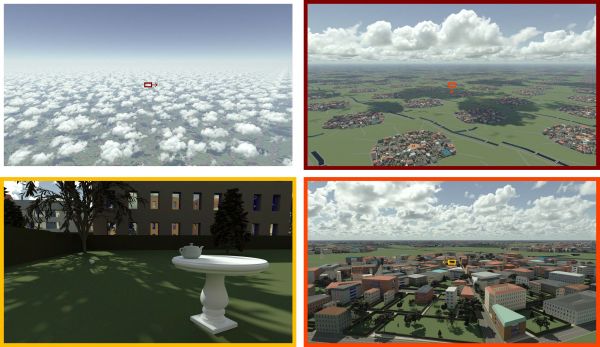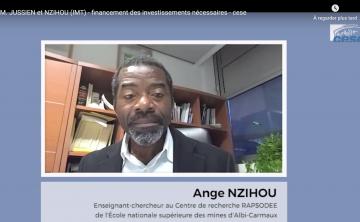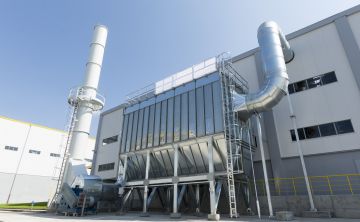Publication of the RAPSODEE training and research center in the 'Sciences Advances' journal
RAPSODEE publishes in the Science Advances edition of the prestigious review Science, a major step forward on the energy issue.
The physics of energy is enriched with the tools of image synthesis to open up new climate services.
All energy system professionals express this in their core business: doing more than producing qualitative predictions of thermal behavior is an almost inextricable challenge.
From the millimeter of a thermal seal or the thickness of a pane to ten kilometers of the extension of a urban area; from the minute of the fluctuation of the wind or the sunshine to the fifty years of life of an installation: when an energy system involves such scale ratios, its analysis, its sizing, its optimization are deemed impossible. We are then led to make descriptive compromises whose impact only experts can measure. These difficulties are at the heart of current attempts to develop climate services which, applied in the energy sector, must make the link between the forecast of climate change and the political choices for installing systems anticipating future environmental conditions.
In this perspective article, RAPSODEE proposes a new paradigm for modeling energy systems under a changing climate: the "teapot in the city".
"City", because the demonstration of this paradigm concerns the city, which is a key issue in the adaptation to climate change; "teapot" in reference to the concept of "teapot in the stadium" in computer graphics, a community which, for the cinema and video game industry, has attacked and solved the question of the management of large scale ratios for modeling light propagation in infinitely detailed virtual scenes.
This computer revolution is at the origin of the proposal which is then enriched by two elements: on the one hand, major theoretical advances in statistical physics making it possible, beyond light alone, to extend the tools for the synthesis of image to the propagation of energy at large; on the other hand, the integration of data from climate simulations making it possible to take account of fluctuations in meteorological conditions at all their scales.
Mouna El Hafi, Professor and Head of the Energetics-Environment group, shares her feelings following this publication in Science Advances:
It’s a dream come true: being able to publish our research results that we have been developing for 25 years in a prestigious journal is a real recognition by our peers.
The EDSTAR collective, which has around fifty people, brings together each year trainees, technicians and administrative staff, then researchers, doctoral students, from several disciplines, biology, weather, physics, process engineering, thermal, education sciences, which allows exchanges of great richness. This publication is multi-site and is the reflection of a long-lasting and multi-disciplinary collaboration.
What is even more exciting is to feel that we are helping to advance societal issues related to energy and climate.
Title of the published article: “The 'teapot in a city': a paradigm shift in urban climate modeling” Science Advances: https://www.science.org/doi/10.1126/sciadv.abp8934
Large spatial scale ratios in urban environments, physically realistic synthetic images taken from the film ""The Teapot in a City under Cumulus Clouds" © CNRS / Sorbonne Univ
The partner actors of the project
Focus on EDSTAR, a collective of researchers behind the computing platform
The EDSTAR group is a scientific computing platform for the analysis and dimensioning of energy systems. It has the human and software resources necessary for the reproduction in the energy field over short times, of the recent successes of computer graphics during its transition from deterministic to statistical. The methods used in the world of image synthesis in the film industry make it possible to account for the almost infinite spatio-temporal scale ratios.
Meso-Star
Mouna El Hafi, Professor and Head of the Energy-Environment group, is the scientific representative of IMT Mines Albi with the company Meso-Star with which the establishment is developing a strong partnership (training, ANR and industrial contracts) with the 4 researchers of this startup, 2 computer scientists from the world of image synthesis, video games and 2 physicists.
For more than 25 years, RAPSODEE has been developing statistical methods in the field of thermal radiation, thermal engineering, process engineering and more recently chemistry for a wide variety of applications (combustion, solar thermodynamics, thermal processes). More than twenty theses have been co-supervised with several members of EDSTAR. In addition, several doctoral students trained at IMT Mines Albi are now researchers or teacher-researchers in this collective to develop these techniques in their structure. This collective meets one week a year to share advances and calculation tools, with 5 to 10 participants from the RAPSODEE training and research center.





